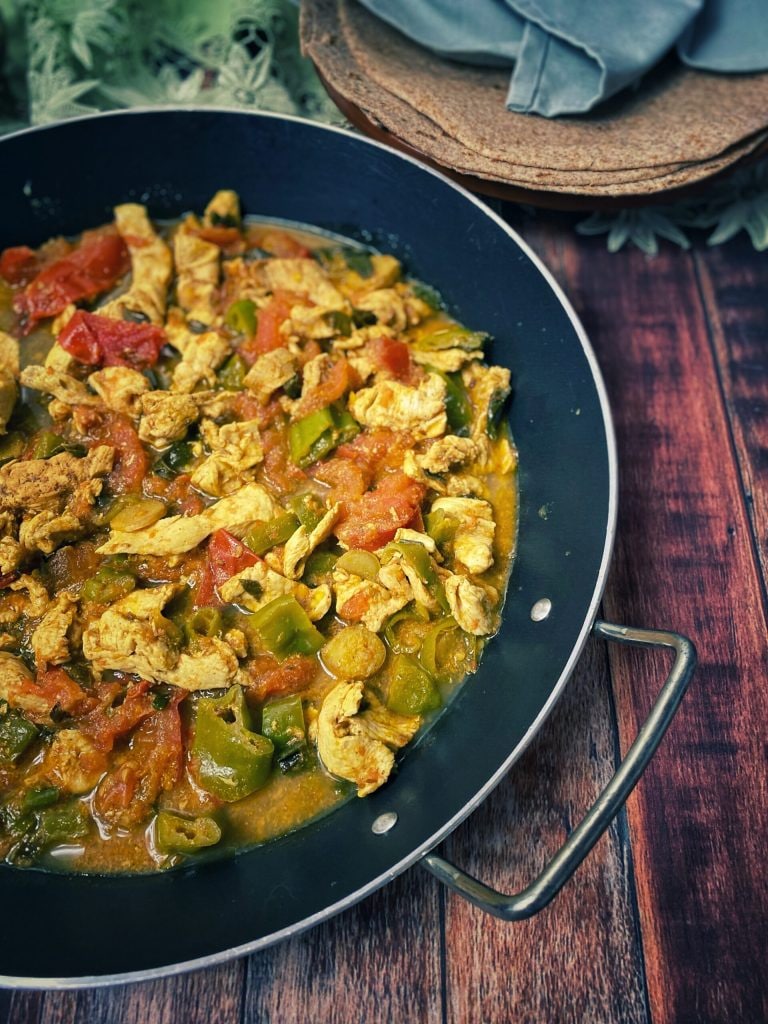A balti or bāltī gosht (Urdu: بالٹی گوشت, Hindi: बाल्टी गोश्त) is a type of curry served in a thin pressed steel wok called a “balti bowl”.
The name derives from the metal dish in which the curry is cooked, rather than from a specific ingredient or cooking technique.
Balti curries are cooked quickly using vegetable oil instead of ghee (clarified butter), at high heat as if stir-frying the ingredients, and the meat used is boneless.
This combination is markedly different from traditional Indian curry (masala) in a pot, slow-cooked all day.
The Balti sauce is based on garlic and onion, tomato, chili, and with turmeric and garam masala, among other spices.
The Balti gosht is consumed in northern India and Pakistan, but also in other parts of the world, like Britain.
The British version of Balti was born in Birmingham in 1977 when it was first served in a restaurant called “Adil’s”.
Balti restaurants are often known in Birmingham as “balti houses”. Some of them have a glass slab on the tabletop with menus fixed underneath.
The best-known dish is Chicken balti, which is with chicken.

- Difficulty: Easy
- Cost: Economical
- Preparation time: 5 Minutes
- Portions: 2 People
- Cooking methods: Stovetop
- Cuisine: Pakistani
- Seasonality: All seasons
Ingredients
- 1 lbs chicken (boneless)
- to taste ginger
- 1 1/2 onion
- 2 green chilies
- 2 cloves garlic
- to taste turmeric
- to taste garam masala
- to taste cumin
- 2 tomatoes
Tools
- 1 Pot Balti
Steps
For the balti sauce: blend 1/2 onion, 1 clove of garlic, the tomato, the turmeric, and the garam masala.
Heat a balti (or iron pot-wok), add some vegetable oil, fry ginger, onion, green chilies, garlic (1), cumin. Add the diced chicken, the balti sauce, and 2/3 cup of water.
Cook for 15 minutes.

You can serve in traditional Balti serving dishes and if you want to replace the balti sauce with the ready-made one.
FAQ (Questions and Answers)
What is a balti bowl?
Balti, as a food, is named after the steel or iron pot in which it is cooked, similar to an Indian karahi (a thick, circular, and deep pot).
The word is found in Hindustani, Odia, and Bengali, and means “bucket” and developed from the Portuguese balde, meaning bucket or pail; it traveled to the Indian subcontinent through Portuguese sea-faring enterprises in the early 16th century and made its way into the English language during the British India period.
Balti, as a food, is named after the steel or iron pot in which it is cooked, similar to an Indian karahi (a thick, circular, and deep pot).
The word is found in Hindustani, Odia, and Bengali, and means “bucket” and developed from the Portuguese balde, meaning bucket or pail; it traveled to the Indian subcontinent through Portuguese sea-faring enterprises in the early 16th century and made its way into the English language during the British India period.

